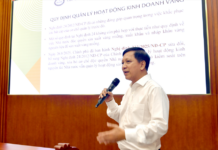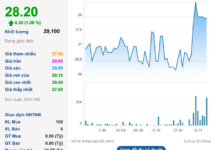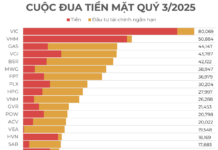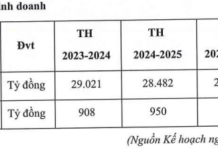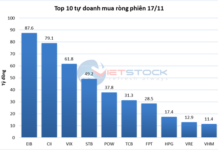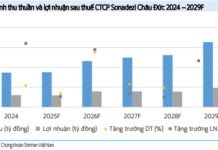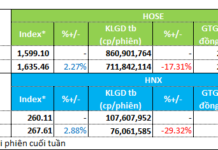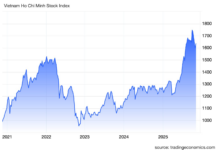Vietnam Electricity (EVN) last week informed the Ministry of Industry and Trade about the plan to conduct a pilot program for a two-part pricing mechanism (comprising electricity consumption and capacity) this year, before implementing it widely from 2025.
Currently, Vietnam applies a single-component price according to Decision 28 on the retail electricity price structure, which means the amount paid is based on the monthly usage. For example, if a household consumes 500 kWh in a month, the amount to be paid = kWh consumed x retail price for each tier (there are currently 6 tiers for household consumption).
For the production and business sector, the bill = number of kWh consumed x price according to voltage level and time frame (normal, low, peak).
Nguyen Minh Duc of the Vietnam Chamber of Commerce and Industry (VCCI) stated that the current calculation method does not accurately reflect the costs incurred by the electricity sector (depreciation of assets, power lines, transformer stations, etc.) for each customer. This is a drawback.
For example, two households, household 1 consumes 24 kW in one hour and household 2 consumes 24 kW in one day. They pay the same amount, both at the first tier price, but in reality, the operating and investment costs for these two cases are different.
In the first case, EVN incurs the investment cost of the 24 kW capacity used (fixed cost) and the operating cost for one hour (variable cost). In the second case, the capacity investment cost is lower, only 1 kW, but the operating cost is calculated for 24 hours. Thus, the utility’s investment level for household 1 is several times higher than for household 2.
Similarly, for manufacturing plants, the monthly capacity demand is around 1,500 kW. The electricity sector must invest in transformer stations, power lines, and operation management corresponding to this capacity level.
In case the plant reduces production, the consumption decreases and the monthly payment is calculated based on the actual kWh consumed. At this time, the electricity sector incurs losses in operating costs, power line management, and stations. In other words, the investment cost is spread out, regardless of the size of the plant.
According to Associate Professor Dr. Tran Van Binh (Hanoi University of Science and Technology), the current mechanism has the advantage of simplicity, but it does not accurately reflect the user’s costs. Moreover, the price list for production, business, and peak-off-peak hours has changed significantly compared to 10 years ago – the time when the current price list was issued.
In reality, electricity is a special commodity, and its production and operation consist of two components: consumed electricity and registered capacity. Therefore, according to the Electricity Regulatory Authority (Ministry of Industry and Trade), it is necessary to study and pilot a pricing mechanism that includes a capacity component.
However, for the time being, this pilot is only being considered for electricity customers in the production and business sectors, which are large consumers and are currently charged based on the time of day.
The pilot will not be applied to household consumers, so their electricity bills will not be affected as they will still pay according to the current price list.

Southern power workers repairing electricity on power lines. Photo: EVN |
With the two-component pricing mechanism, according to experts, it will avoid spreading out investments, and costs will be calculated closer to each individual’s usage.
In essence, the amount paid according to the two-component price = the amount of electricity consumed and the amount for the registered capacity.
In that, the capacity price, according to Mr. Binh, can be calculated based on the customer’s usage or EVN’s investment cost rate. The investment cost of the plant will be divided separately for each customer.
In other words, users must pay for each 1 kW of capacity they register monthly with the supplier. If they do not use it all, they must pay this cost, instead of the electricity sector bearing it and recovering it through price adjustments as it does now.
The advantage of this pricing method, according to the Electricity Regulatory Authority, is that households with the same usage but a lower load factor (actual demand compared to registered capacity) will pay more. This aims to regulate demand while EVN can still recover investment costs.
Moreover, with the same registered capacity, the unit with a longer usage time will have a lower average price. This means that the cost they pay for a unit of electricity will decrease because the capacity price (fixed cost) remains unchanged. This is also an advantage of this pricing method.
For example, two companies A and B consume 2.7 MWh and 7.5 MWh, respectively. They both register a capacity usage of 2,000 kW. Assuming the capacity price is 216,540 VND per kW/month; the actual demand compared to the registered capacity (load factor) of A and B are 0.14% and 0.84%, respectively.
Comparison of invoices, the average price of the two companies when applying the current calculation method (electricity consumption) and when adding capacity price:
| Unit | Company A | Company B | Total | |
|
Calculation based on electricity consumption (single-component price): |
||||
| Consumption | MWh (=1,000 kWh) | 2.7 | 7.5 | 10,283 |
| Average price | VND/kWh | 1,364 | 1,364 | 1,364 |
| Amount to be paid | billion VND | 3.7 | 10.3 | 14 |
|
Calculation based on electricity consumption and capacity (two-component price): |
||||
| Maximum capacity used | kW | 2,000 | 2,000 | 4,000 |
| Capacity price | VND/kW/month | 216,540 | 216,540 | 216,540 |
| Fixed cost (capacity price x capacity used) | billion VND | 0.43 | 0.43 | 0.86 |
| Variable cost (operating cost/hour) | VND/kWh | 1,011 | 1,011 | 1,011 |
| Amount paid | billion VND | 5.85 | 8.2 | 14 |
| Average price | VND/kWh | 2,161 | 1,079 | 1,364 |
The above example shows that the amount collected by EVN from the two companies is the same, over 14 billion VND when calculated in both ways.
However, with the same registered capacity (2000 MW), Company B will have to pay a lower average price with a longer usage time. In other words, the closer the actual usage is to the registered capacity, the more profitable it is in terms of price. According to the Electricity Regulatory Authority, this is an incentive for users to be responsible, adjust their usage behavior, and optimize costs.
“They register their capacity with the supplier, but if they add equipment beyond the registered level, the electricity meter will jump. At that point, they must reduce their usage










